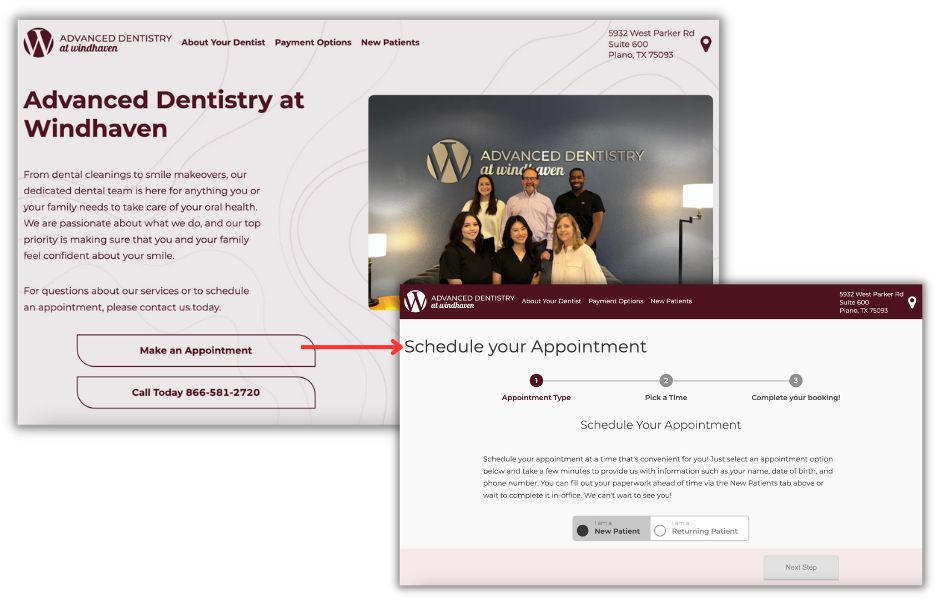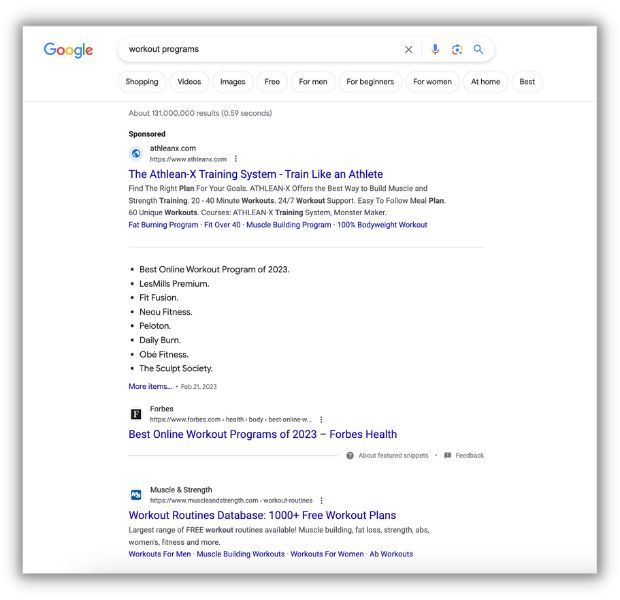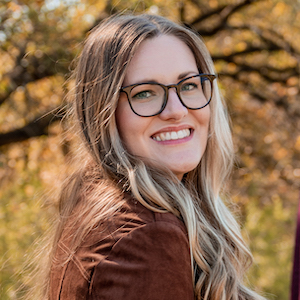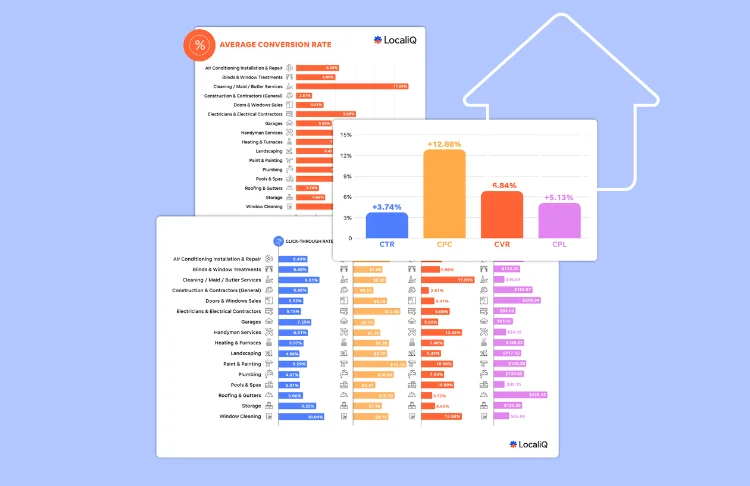As the healthcare industry has experienced challenges and changes over the last few years, one constant is the effectiveness of search advertising in attracting new patients.
Google estimates that about 7% of its daily searches are healthcare-related. Admittedly, this doesn’t sound like much, but it amounts to over 70,000 searches every minute, or over 1 billion every day. Plus, 77% of people use search engines before booking with a healthcare provider.
That’s a lot of searches and a lot of opportunities for your healthcare business to get in front of those searchers and convert them into leads for your business.
But what does effective healthcare advertising look like on search engines? And how can this data guide your healthcare advertising strategy?
To help answer these questions, we’re sharing the average search advertising benchmarks for healthcare, including:
(Don't worry, we'll dive deeper into each of these metrics!)
Plus, we’re providing helpful tips healthcare businesses can use to optimize their campaigns and see great results from their Google Ads this year.
Average click-through rate for healthcare search advertising
Click-through rate (CTR) is calculated by dividing total clicks by total ad impressions and can be a good indicator of your ad’s quality. A higher CTR could mean your ad is compelling users to click on your ad or that your ad copy effectively addresses the query—both in terms of the information it provides as well as how it aligns with search intent.
| Healthcare business type | Avg. click-through rate |
| Addiction Recovery | 4.63% |
| Assisted Living, Elder & Home Care Services | 6.75% |
| Chiropractic Care | 5.21% |
| Dentists & Dental Services | 5.34% |
| Health Clubs & Gyms | 7.35% |
| Hearing Aids & Care | 6.34% |
| Hospitals & Clinics (Specialized Services) | 7.23% |
| Personal Fitness Trainers | 6.63% |
| Cosmetic Surgery | 6.26% |
The healthcare businesses with the highest CTRs are Health Clubs & Gyms (7.35%), Hospitals & Clinics (7.23%), and Assisted Living, Elder & Home Care Services (6.75%).
The healthcare businesses with the lowest CTRs are Addiction Recovery (4.63%), Chiropractic Care (5.21%), and Dentists & Dental Services (5.34%).
As a whole, most healthcare subcategories we analyzed saw higher CTRs than the total average across industries of 6.11%.
Average cost per click for healthcare search advertising
Cost per click (CPC) is quite literally how much you’re paying per click. It’s determined by dividing your search advertising campaign budget by how many clicks you’ve received.
| Healthcare business type | Avg. cost per click |
| Addiction Recovery | $4.06 |
| Assisted Living, Elder & Home Care Services | $4.18 |
| Chiropractic Care | $4.95 |
| Dentists & Dental Services | $6.69 |
| Health Clubs & Gyms | $3.16 |
| Hearing Aids & Care | $6.23 |
| Hospitals & Clinics (Specialized Services) | $3.86 |
| Personal Fitness Trainers | $5.93 |
| Cosmetic Surgery | $4.57 |
When broken down by subcategories within the healthcare industry, you see a wide range of CPCs, with Hospitals & Clinics on the lower end at $3.86 and Dentists & Dental Services at the higher end at $6.69.
As a whole, 91% of the industries we looked at in our wider report saw increased CPCs from 2022 to 2023 with an overall average of $4.22.
Average conversion rate for healthcare search advertising
Conversion rate is arguably one of the most important metrics for success in search advertising since it measures how frequently a click on your ad results in a user converting. Conversion rate is calculated by dividing the number of leads conversions you’ve received from your ads by the total number of clicks.
| Healthcare business type | Avg. conversion rate |
| Addiction Recovery | 7.34% |
| Assisted Living, Elder & Home Care Services | 6.12% |
| Chiropractic Care | 8.18% |
| Dentists & Dental Services | 10.40% |
| Health Clubs & Gyms | 7.26% |
| Hearing Aids & Care | 4.87% |
| Hospitals & Clinics (Specialized Services) | 12.33% |
| Personal Fitness Trainers | 3.60% |
| Cosmetic Surgery | 3.97% |
The healthcare businesses with the highest conversion rates are Hospitals & Clinics (12.33%), Dentists & Dental Services (10.40%), and Chiropractic Care (8.18%).
The healthcare businesses with the lowest conversion rates are Personal Fitness Trainers (3.60%), Cosmetic Surgery (3.92%), and Hearing Aids & Care (4.87%).
This could be due to a number of factors, including search intent and the changing landscape of search results pages. We’ll cover this in a little more detail later.
Average cost per lead for healthcare search advertising
Cost per lead (CPL) is the average amount your campaign will spend to acquire one lead. It’s calculated by diving your total spend by total conversions.
| Healthcare business type | Avg. cost per lead |
| Addiction Recovery | $59.74 |
| Assisted Living, Elder & Home Care Services | $66.02 |
| Chiropractic Care | $68.72 |
| Dentists & Dental Services* | $65.37 |
| Health Clubs & Gyms | $47.47 |
| Hearing Aids & Care | $90.92 |
| Hospitals & Clinics (Specialized Services) | $32.14 |
| Personal Fitness Trainers | $100.48 |
| Cosmetic Surgery | $134.29 |
The healthcare businesses with the lowest CPLs are Hospitals & Clinics ($32.14), Health Clubs & Gyms ($47.47), and Addiction Recovery ($59.74).
The healthcare businesses with the highest CPLs are Cosmetic Surgery ($100.48), Personal Fitness Trainers ($100.48), and Hearing Aids & Care ($90.92).
91% of industries we analyzed saw an increase in CPL this year with an overall average of $53.53. This can likely be attributed to inflation, supply chain factors, and an uncertain economic climate.
The good news is, there are some ways you can combat these increases, which we’ll discuss next.
Tips for healthcare search advertising
Use these tips to optimize and improve your healthcare search advertising campaigns.
Optimize your landing page
One simple way you can improve your conversion rate and other aspects of your search advertising campaign is by optimizing your landing page.
There are two ways in which you’ll need to optimize your landing page(s).
Relevancy
You’ll want your landing page to be relevant to the keyword(s) you’re bidding on as well as your ad copy. This not only presents a seamless user experience, but it can also improve your Quality Score. A better Quality Score has been tied to lower costs per conversion and costs per click.
Conversion
To make the path to conversion as easy as possible, you’ll want your healthcare advertising landing page to be easy to navigate, include a clear call-to-action (CTA), and make it easy to collect lead information. This means your landing page should be mobile-friendly or responsive and include some kind of form that collects contact information from a prospect.

This landing page includes a link to a form as well as a click-to-call button for two easy ways to capture conversions.
You may also consider including live chat on your landing page as another way to collect lead details and provide additional information that can increase the chance a user will convert.
Align your campaigns with search intent
One reason you may see a higher click-through rate but lower conversion rate from your healthcare search advertising campaigns is a mismatch of intent.
For example, consider a search for “workout programs.” If you’re targeting that keyword with your search advertising campaigns for a gym or personal training service, you may see fewer conversions because those searchers have low intent. They’re most likely looking for information at that point, not services.

Those searching for a hospital or clinic may potentially be searching more directly for those services, resulting in higher conversion rates.
This is why it’s important to consider intent and take a full-funnel approach to healthcare advertising. You can create blog content that addresses lower-intent keywords and still captures these searchers while targeting high-intent keywords for your search advertising campaigns. That way, your search campaign is targeting people who are most likely to convert.
Update your ad copy
Healthcare is deeply personal, and what works for an urgent care patient may not work for an orthopedic patient. This is where updating and optimizing your ad copy can benefit your search campaigns and contribute to increased CTRs and conversions.
Make sure to include trigger words and effective CTAs in your ad copy to capture attention and drive action. And consider different ways to approach your ad copy that may appeal to your audience. You can analyze what your competitors are doing to identify areas you’ll stand out.

It’s also important to keep your target market front and center when writing ad copy for your healthcare advertising campaigns. What’s most important to them when looking for your services? What do your current patients like best about your business? Integrating this information into your ad copy strategy can help you boost results.
Check on the health of your healthcare search advertising campaigns
This data provides a helpful starting point when it comes to analyzing the performance of your healthcare business’s search advertising campaigns. But it’s important to remember that every search advertising campaign is unique. Your results may vary from these benchmarks, and that’s okay. By using these tips and insights, you can optimize your campaigns and make the most of your search advertising budget.
Want more information on how to make search ads work for your healthcare businesses? Reach out to get a demo.
>> Want to know what's big in healthcare marketing for 2024? Check out these healthcare marketing trends!
About the data
This report is based on a sample of 1,926 US-based search advertising campaigns running between Apr 1, 2022, and March 31, 2023. Each subcategory includes at minimum 37 unique active campaigns. “Averages” are technically median figures to account for outliers.






